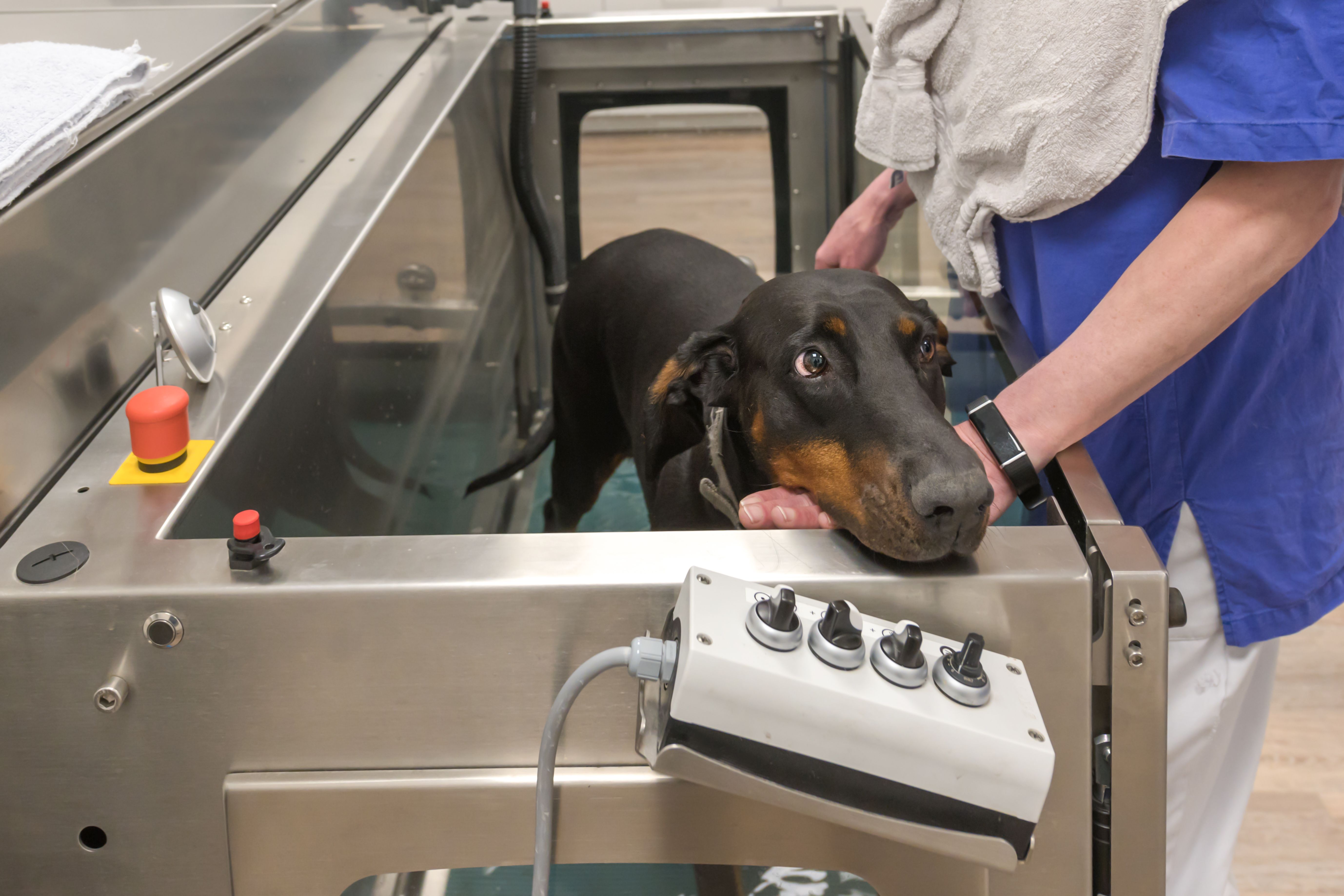Physical rehabilitation involves returning an animal who is postsurgical back to their presurgical state, according to Kirsten Oliver, VN, DipAVN (Surgical), CVT, CCRP, CVPP, VTS (Physical Rehabilitation). At the 2021 Atlantic Coast Veterinary Conference®, Oliver provided insight on modalities of basic therapeutic rehabilitation and described conditions that can be treated using rehabilitation.
Modalities of basic therapeutic rehabilitation
Oliver explained that whether it’s an athletic dog, working dog, or family pet, manual therapy is most frequently used in rehabilitation, although a plethora of other modalities exist as well.
“Hands are basically some of the biggest modalities we have. We do a lot of hands-on treatment in conjunction with low-level therapeutic laser, underwater treadmill, or aquatic therapy. We have therapeutic ultrasound, which is a little different from your traditional diagnostic ultrasound, which aids in deep soft tissue heating. It’s very good over muscles and tendons,” she said.
Oliver also detailed some more modalities, including neuromuscular electrical stimulation, which helps to reeducate muscle groups; low PiezoWave (by ELvation) shock wave, which unlike traditional hydro-electric shock wave, does not require sedation to perform treatment; acupuncture; targeted pulsed magnetic field therapy; and a wide range of nutraceuticals, pharma logics, and thermal therapies—both hot and cold.
Common conditions
There are a variety of conditions that rehabilitation specialists can treat, Oliver said. We are able to treat both pre- and post-surgical orthopedic patients, those suffering from musculoskeletal injuries, osteoarthritis and neurologic patients. They can also help companion animals with weight loss.
“We run a very successful weight management program where we can discuss with…our clients the best way to reduce weight safely with the appropriate diet and exercise regime along with a conditioning program where we can start to reintroduce the idea of activity through low-level, low-impact exercise,” she said.
Rehabilitation can also help oncologic patients with their mobility as they undergo various types of chemotherapy and radiation or after amputation.
“There’s an awful lot we can treat: postsurgical, presurgical, weight loss, neurologic conditions—we work a lot with our referring neurologists. Whether it be a postoperative neurology case or a long-term degenerative condition. We can formulate a program to work in the clinic or outside the clinic,” she said.
The Working Dog Practitioner Program
Along with treating various conditions, as a rehabilitation practitioner, Oliver incorporates concepts of the Working Dog Practitioner Program. This program offers courses that specialize treating working and performance dogs who often have higher physical exertion demands, increased risk for injury, and more exposure to hazards.1
“Our canine officers…their job description is a lot different from your average companion animal. We have a lot of dogs that have a variety of different job duties ranging from protection to detection, so they have to be at a slightly different athletic conditioning [level],” Oliver said.
Bringing rehabilitation into clients’ homes
Ever since the COVID-19 pandemic has swept through the nation, “A lot of people don’t want to or can’t bring their animals in, so we’re happy to work with them to get them the kind of rehab their pet needs at home,” Oliver said.
Oliver said she uses an online program (Canine Home Exercise) to send the exercises the pet needs to the client. The program is individually built to achieve the outcome for that pet. Each program contains video instruction and written details for the client and is adjusted as the pet progresses. The program contains a tracking feature where the client “rates” how the pet does with the exercise, so we can see if the pet is coping well. Each patient is evaluated in the clinic first and re-evaluated at set points. Each program is emailed to the client and is accessible on any mobile device, so exercises can be done on walks, in the house, or more, offering the client access to the rehabilitation plan on the go.
Takeaways
Manual therapy is a key component to the success of rehabilitation along with a range of modalities currently available to treat pets. Common conditions that can be treated using rehabilitation include orthopedic issues, weight management, oncologic conditions, and beyond. Like in other areas of veterinary medicine, certain rehabilitation professionals offer at-home services to provide both pets and their owners more comfort and convenience.
Reference
Working dog practitioner program. University of Pennsylvania. Accessed October 29, 2021. https://www.vet.upenn.edu/research/centers-laboratories/center/penn-vet-working-dog-center/learn-about-working-dogs/practitioner-certification

